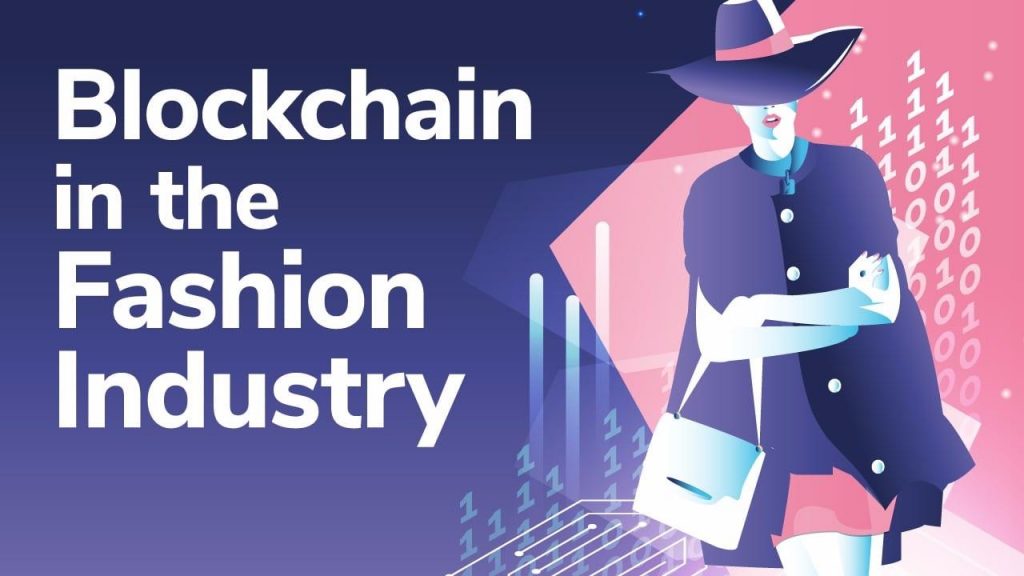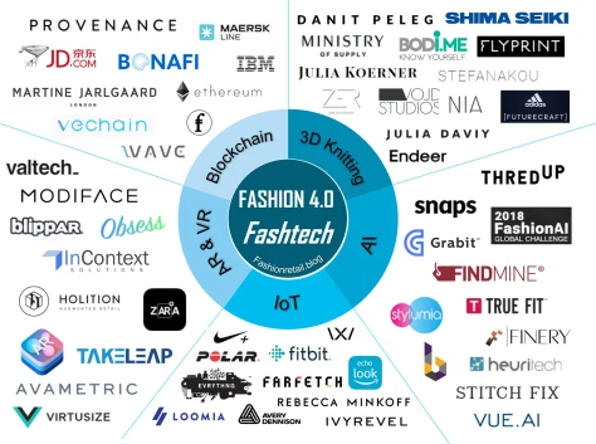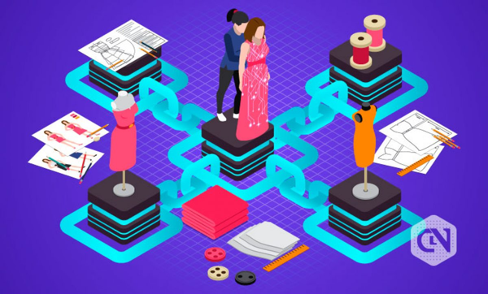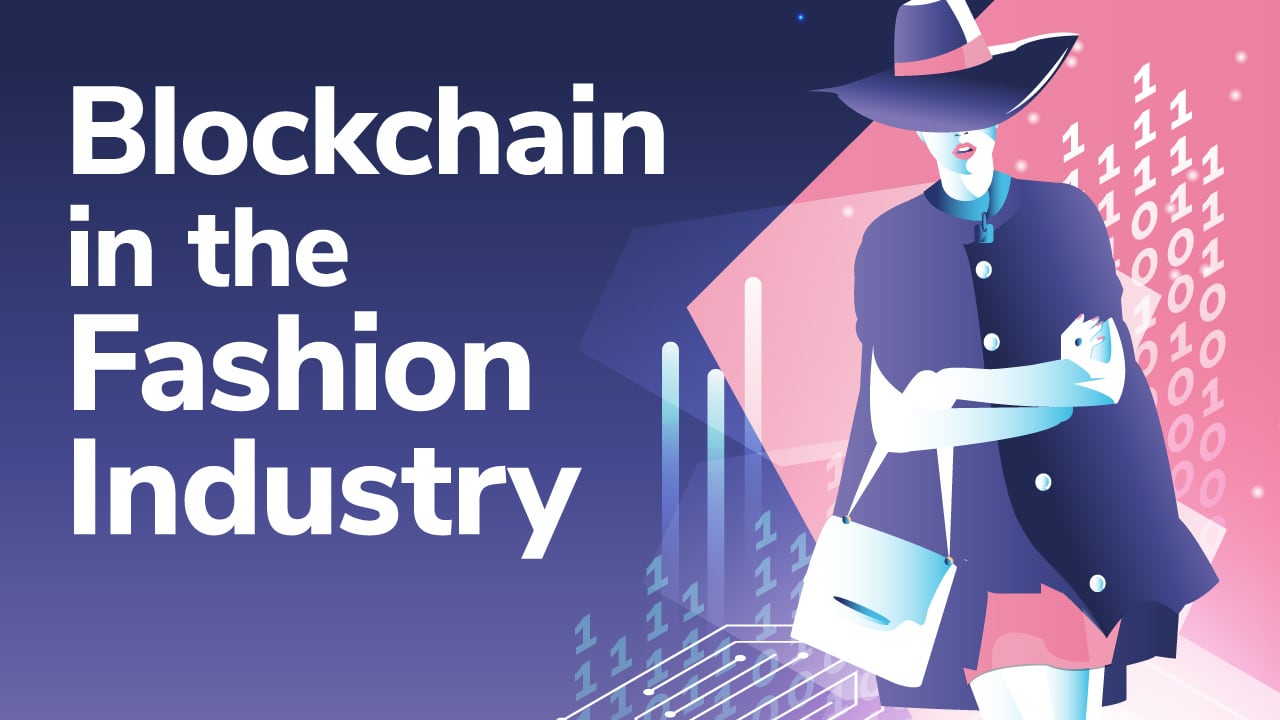
The fashion industry, and in particular, luxury brands, were famously late to the party when it came to the rapid growth of e-commerce and internet shopping. However, it appears they may be getting ahead of the game with the introduction of blockchain. So, what is blockchain? And why is blockchain adoption in the fashion industry a good thing?
In this article, we cover the luxury designers to high-street brands with their latest blockchain projects for clothes, shoes, perfume, and accessories. The world is being pushed to more of an e-commerce-centric shopping experience, with more businesses than ever setting up online.
We will explore how blockchain can help increase the efficiency and accounting of every consumer transaction, while also helping with provenance, ownership, and increase the digital shopping experience for both consumers and brands.
Nevertheless, blockchain technology in the fashion industry is just one of the countless examples of how blockchain can supercharge existing industries. Sign up for Ivan on Tech Academy if you want to learn more about the various use cases for blockchain technology, and get a world-class cryptocurrency education.
How Blockchain Technology Works
Blockchain technology is part of the collection of technologies for-fronting the fourth industrial revolution, also referred to as Industry 4.0, or 4IR.

Blockchain technology takes the internet to the next level, creating a truly decentralized, global network of computers that process and verify transactions mathematically, with no human intervention.
The collection of computers in the network are called nodes. Each node has a database or ledger, of all transactions completed on the blockchain, with the updates in near-real-time. Every node must agree that a transaction is valid before it is then immutably stored on the blockchain.
Immutability refers to the inability to adjust or remove any information about the transactions. Once a transaction is appended to the blockchain, it may as well be written in stone.
Another key advantage of blockchain is the transparency of the open-source technology. Blockchains can either be public or private. The transactions on public blockchains can be viewed by anyone with the internet, using a block explorer website such as etherscan.io.
Transactions are cryptographically hashed so you can not view personal information, however, you can see the amount of money moved, when, and the addresses where it’s moving from and to.
With private blockchains, transactions are unavailable to the public to view to maintain a certain level of confidentiality. Only those with the corresponding private keys can view the blockchain transaction history. Private blockchains are becoming increasingly popular among enterprises.
To learn more about how blockchain technology works, make sure to save this Deep Dive article for later!
Why Is Blockchain In The Fashion Industry A Good Thing?
Monitor Deliveries
No more stressing about items and parcels getting ‘lost’ in the post – with blockchain, both consumers and sellers can view exactly where the items are, including GPS navigation tracking from the distributors’ warehouse, to the consumers’ front door.
Amazon and other online retailers have made it incredibly easy to have many different items delivered to your house within a few clicks. That bit is simple. But, no matter where you live, waiting around for deliveries can decrease productivity and be extremely tedious. If you have to take time off work to receive a large consignment, only to receive an email at 4 pm informing you of a delay, this could completely mess up your day. For anyone building a project that relies on many different suppliers and deliveries, for example, time is money. When delays occur, things can turn bad, quickly.

The process of tracking and tracing deliveries of online purchases on the blockchain could heavily reduce the likelihood of items getting ‘lost’ in the post or for customers to have to chase around to retrieve items that were not delivered. Each step of the process can be monitored on the blockchain, making for an efficient and transparent experience for customers and suppliers alike.
Reducing Counterfeit Items
Items that are registered on the blockchain will be next-to-impossible to counterfeit. There is the argument that a counterfeit item could be registered on the blockchain in the beginning or during the supply-chain process. However, most consumers don’t worry about high-end brands shipping counterfeit items from their warehouses, and soon items that do not have a QR code will probably be deemed as fake.
If a genuine item was switched out for a fake partway through the distribution process, it will be clear from the blockchain records when the event took place, and easy to locate where the fake items are coming from.
Arianee, a project based in Paris, has developed a protocol using blockchain to give physical valuable items a digital identity and act like a passport displaying all previous owners and transactions including when an item was last serviced.
Items can be linked to the blockchain using QR codes, serial numbers, or a physical microchip embedded in an item.
Arianee is a new start-up with a strong team of founders, directors, and developers, all working towards “building perpetual relationships between brands and owners, made of trust, respect and transparency.”

The Italian government budgeted €15 million of investment into blockchain technology earlier this year, to help reduce the amount of ‘Made in Italy’ counterfeit items. Fake ‘Made in Italy’ items cost the Italian economy a massive €12.4 billion in 2016 alone. The introduction of blockchain would assist the independent artists, creators, and local businesses making a living selling the internationally desired ‘Made in Italy’ branded goods.
Ownership On The Blockchain
This year there has been increasing interest in ownership on the blockchain, which has been propelled with the rise of NFTs. The blockchain allows the ownership of data, intellectual property, and physical property, to be trustless and mathematically verifiable.
In 2017, Martine Jarlgaard, a designer from London, produced the first garments with ‘smart labels’ often in the form of QR codes, that are recorded and tracked on a blockchain.
Since then, Satoshi Studios, based in Paris, sells high-quality and stylish sneakers in a choice of colors that can be registered on the blockchain using the QR code attached to the tongue of the trainer. By scanning the QR code you can view the materials used, the origin, and suppliers throughout the manufacturing process.

Ownership of the sneakers and the product model information is stored on the Arianee blockchain, mentioned earlier, who are partnering with Satoshi Studios to enable the transfer of ownership on the smart contract to your own Arianee wallet.
Satoshi Studios has grown from strength to strength and donates 1% of its annual revenue to charity projects, to help the planet’s ecosystem.
Though this may seem like a novelty to some, digital ownership is becoming an increasingly hot topic and has become a catalyst for blockchain adoption as use cases increase across many different sectors.
Are you interested in learning more about the blockchain? If so, you should sign up to Ivan on Tech Academy, and join over 20,000 existing students in one of the largest blockchain academies in the world. Best of all, you can get a 20% discount with our exclusive promo code BLOG20!
Provenance
The diamond industry is beginning to utilize blockchain technology to trace each step of every supply chain involved in the mining, transporting, crafting, and sales of fine jewelry and the various components involved in each process.
High-end diamond brand DeBeers spearheaded an industry-wide push towards blockchain adoption, with several other diamond manufacturers coming together to help develop and form Tracr, the open-source blockchain platform that is drastically improving traceability within every part of the diamond industry.
London-based jeweler Taylor & Hart recently teamed up with blockchain start-up Everledger to use blockchain as a way to authenticate the provenance of diamonds. By making precious, rare, and valuable items traceable on the blockchain, forgery and counterfeiting could be radically reduced, giving buyers more confidence whilst helping to maintain the reputation of jewelers, miners, and suppliers.

San Francisco-based jeweler Brilliant Earth will also be using the Everledger platform to create an advanced digital record of more than 2 million diamonds. Everledger can track each step in the life cycle of a precious stone or gem and record verifiable data on the blockchain. This could include videos of the rough cut of the gem, the mining facility, weight, and much more.
Soon, those that wish to purchase high-end jewelry can do so without the worry of counterfeited products or mis-sold items. Every element of production and previous ownership can be accessed through the Brilliant Earth website.
Supply-Chain Management
Blockchain in supply chain management is a game-changer for businesses both large and small. Companies can now have full transparency of their bought or imported goods for later sale or service. This includes the authenticity of materials, the journey from manufacturer to wholesalers, suppliers to distributors and retailers, even the record of ownership once a product has been purchased.
Global fashion giant Burberry approached IBM interns earlier this year, to develop a prototype blockchain-based protocol, that would allow Burberry customers to register their garments, alongside viewing the history and information about the environmental and human impact of the item.

The IBM Eternal Blue interns worked alongside Burberry’s digital experts for approximately 3 months to develop the prototype. The protocol is called ‘Voyage’ and has successfully been integrated within the current Burberry download app as a trial to see if their customers are interested in finding out more about the supply chains of garments before buying. Customers are also able to register selected garments on the blockchain with corresponding serial numbers.
Voyage is pioneering a new filtering tool, where customers can choose to search for garments made in a particular country, or specific material, or from guaranteed good working conditions. Also, on the user end, Burberry is working toward complete transparency of its supply chain, and Voyage appears to be of aid.
Increasing Employee Welfare/Reducing Product Recalls
The transparency offered means businesses are now able to view data around the employees involved in the supply chain of a certain product. There have been many headlines around the poor conditions or pay of some of the workers for high-street retailers over the years, however, introducing blockchain in the fashion industry can assist in highlighting concerns, monitoring, and improving employee welfare. This could be implemented through the transparency of pay or hours worked accounted for on the blockchain.
Product recalls could become a thing of the past as blockchain in supply chain management becomes increasingly prominent sector-wide. By recording all steps of the supply chain on the blockchain, we can prevent unnecessary costs and improve customer satisfaction. Items will be less likely to be defective by the time they reach the customer, meaning that quality assurance can be publicly observed on the blockchain.
For the eco-conscious shoppers among us, the blockchain adds a compelling value proposition whereby all eco-friendly claims made by retailers can be digitally verified, so you know that if an item says it is good for the environment or factory workers, that it is just that.

Blockchain Warranties and Coupons
Having open-source electronic records of when goods were purchased, makes it easier for both consumers and manufacturers to maintain records of product warranties, guarantees, and verifiable records of when the warranties are used.
No more needing to hang on to receipts for your fridge or washing machine for years on, you’ll soon be able to log on to an account and view the same information around your purchase as the retailer and manufacturer.
Thanks to the use of blockchain technology, brands and retailers can now offer their customers digital coupons on the blockchain. The digitalization of promotional offers means brands can reach a larger audience on a vastly wider scale, in a much more cost and time-efficient way.
Consumer Data Control
Besides tracking physical goods on the blockchain, consumers can now see when and how their data is being used. When consumer data is entered onto the blockchain, customers can stay In control of where and who they give data to.
This comes as big businesses such as Facebook and Google face increasing regulatory pressure around how consumer data is obtained and how it is used and sold. Consumers are often unaware of what happens with their data when it is given over to such companies, which can often leave people vulnerable to cyber attacks and identity theft.
Blockchain in Fashion – Conclusion
When cross-border payments are cheaper for businesses, these savings could be passed on to consumers. The less a business has to budget for refunds, returns b-stock, and wastage, the lower the operating costs are.

By eliminating many of the shortcomings of online shopping by making items traceable on the blockchain, we could reduce pollution and carbon emissions, while assisting small businesses in reducing wastage and unnecessary costs associated with returns and recalls.
There are so many reasons to look forward to the implementation of blockchain in the fashion industry. Online shopping experiences will be easier than ever before, the welfare of workers in the supply chains of large corporations will increase – verifiably, and the number of counterfeit items will reduce. Businesses can save money, and innovate ways to reduce their carbon footprint as it becomes increasingly transparent.
Ultimately, it appears the technology is creating an opportunity for closer and more direct relationships between brands and consumers. Blockchain in the fashion industry will be a positive movement for consumers, retailers, suppliers, workers, and shareholders alike. Check out Ivan on Tech Academy for blockchain courses that allow you to learn about blockchain technology and use it in your business!





